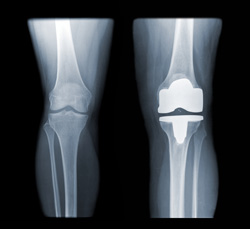Collaboration smoothes joint replacement performance
Ongoing efforts to improve the performance and longevity of joint replacements are important for improved patient mobility. They are also driving innovation in prosthetics design, materials used and the surgical procedures implanting them. This field of biomechatronics is also helping to ease the social and economic burden of joint replacement. The Orthowatch project's overall aim was to improve the longevity of joint replacements by increasing knowledge of the biomechanical environment in which prostheses function and start to falter. The approach included a systematic assessment of the in vivo performance of prostheses removed (explanted) after a period of use in patients. Researchers focused on establishing a standardised screening protocol for categorising the numerous explanted joint prostheses provided by the 'Register of orthopaedic prosthetic explants' (REPO). They also set the stage for quantitative assessments of these devices according to how their materials and structure performed in patients. Based on these assessments, the resulting metrics were used to verify that pre-clinical assessments do in fact represent the conditions and clinical performance they were intended for. Knowledge transfer was enabled by the participation of a PhD post-doc, a PhD engineer, two engineering students, and three biomechanical simulations engineers, and international collaboration with six surgeons and three engineers doing research in England, Germany and the US. The Orthowatch project is a structured, post-marketing surveillance model that integrates the clinical outcomes from the 'Register of orthopaedic prosthetic implants' (RIPO) with the REPO explant retrieval programme. This lent a positive note to the study with different methodologies being brought together to achieve a holistic level of understanding of joint replacement performance. Advances in this work have provided a standardised framework for conducting pre-clinical assessments to better predict where and how joint replacements will function.







